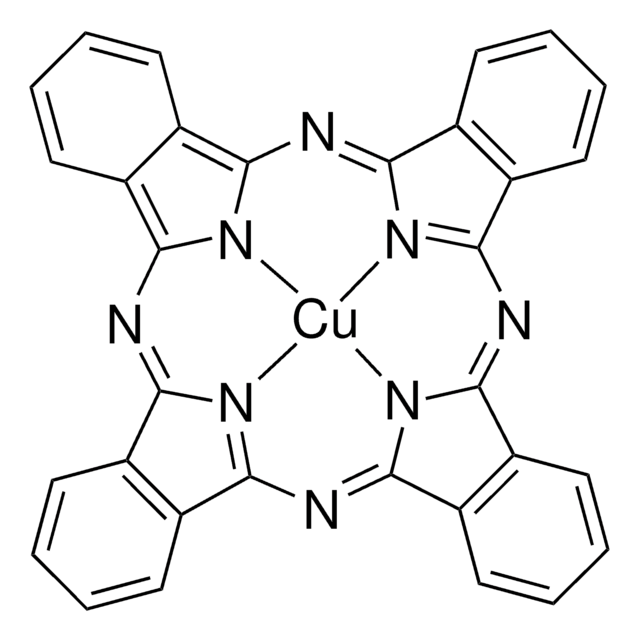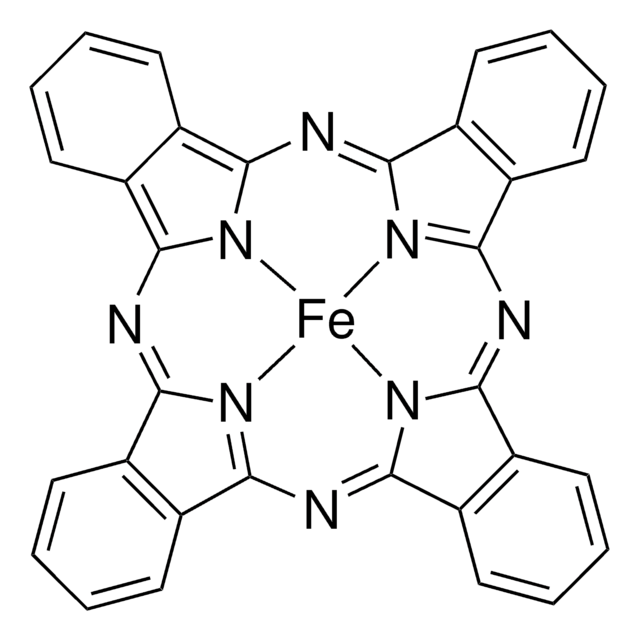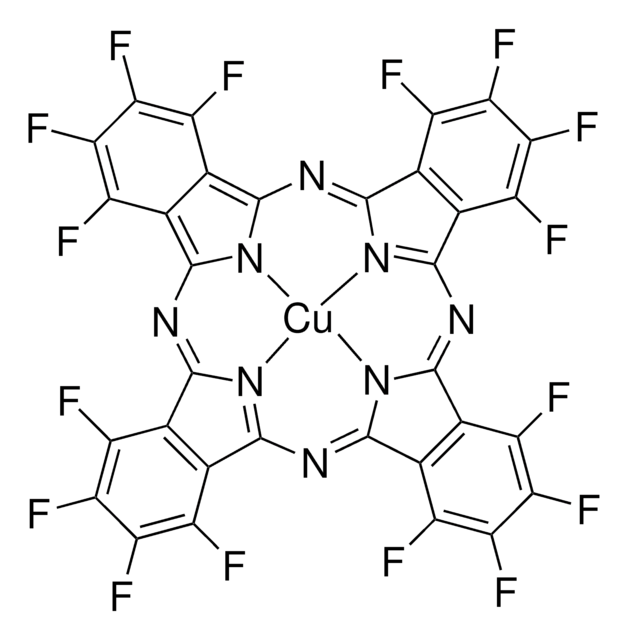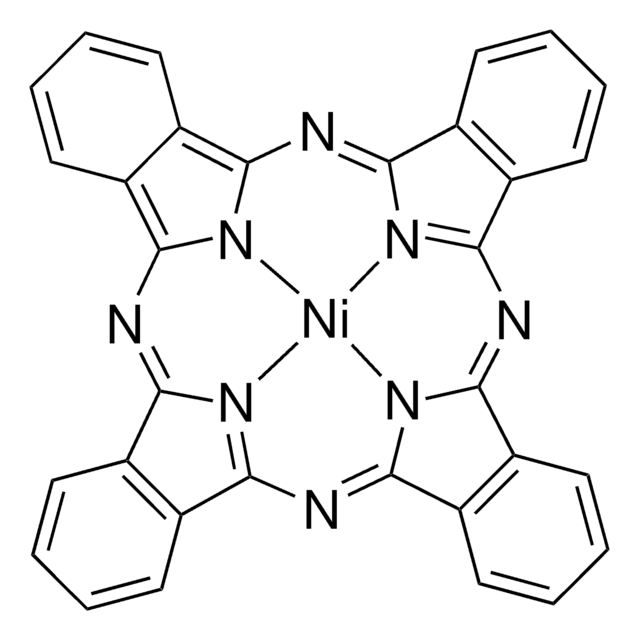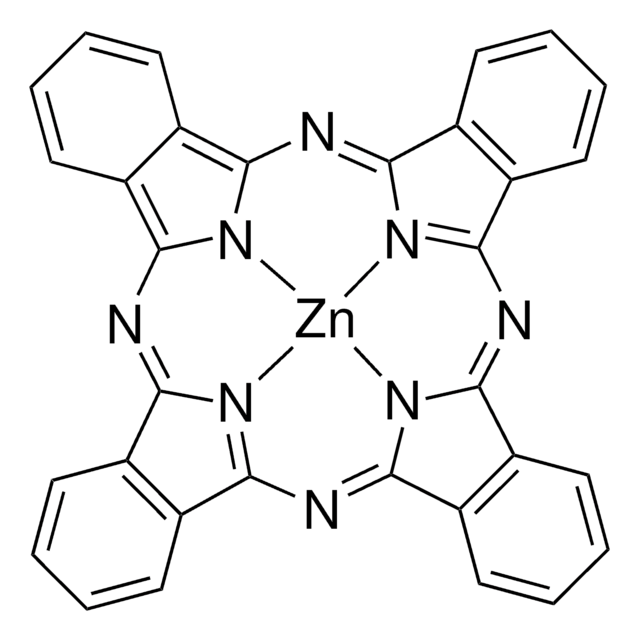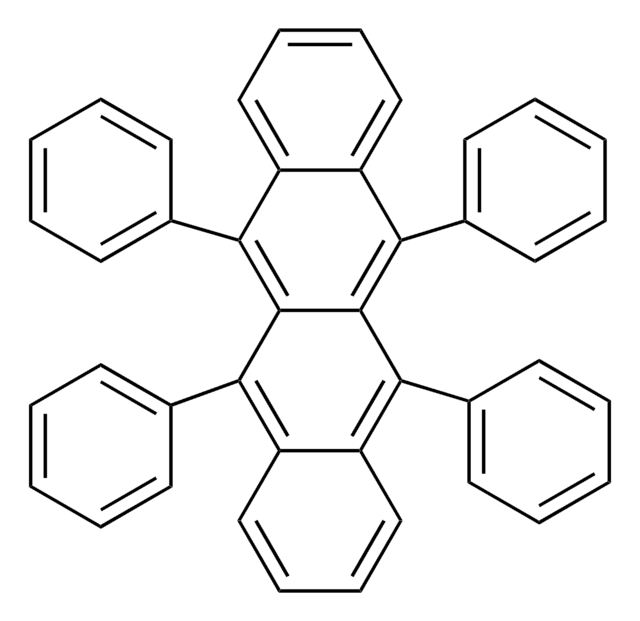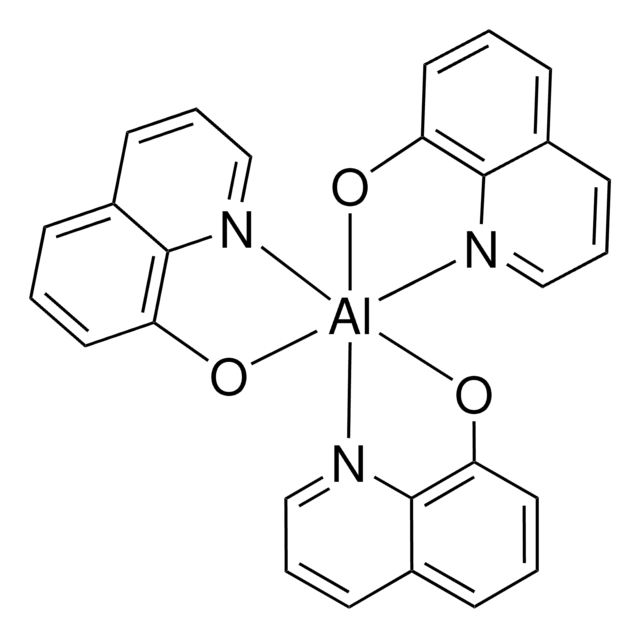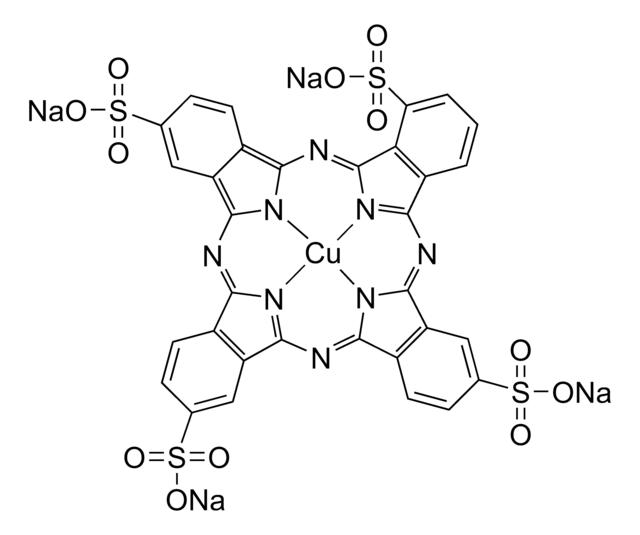702854
Copper(II) phthalocyanine
triple-sublimed grade, >99.95% trace metals basis
Synonym(s):
CuPc, Phthalocyanine blue, Pigment Blue 15
About This Item
Recommended Products
Quality Level
Assay
>99.95% trace metals basis
form
powder
quality
triple-sublimed grade
mp
350 °C
λmax
678 nm
fluorescence
λem 404 nm
Orbital energy
HOMO 5.2 eV
LUMO 3.5 eV
OLED Device Performance
ITO/CuPc/NPD/Alq3/C60/Mg:Ag
ITO/CuPc/NPD/Alq3/LiF/Al
ITO/CuPc/NPD/CBP:Firpic (6%)/BAlq3/LiF/Al
OPV Device Performance
ITO/CuPc/PTCDA/In
ITO/PEDOT:PSS/CuPc/C60/BCP/Al
SMILES string
c1ccc2c(c1)C3=NC4=[N@@H]5C(=Nc6n7c(N=C8c9ccccc9C%10=[N@@H]8[Cu]57N3C2=N%10)c%11ccccc6%11)c%12ccccc4%12
InChI
1S/C32H16N8.Cu/c1-2-10-18-17(9-1)25-33-26(18)38-28-21-13-5-6-14-22(21)30(35-28)40-32-24-16-8-7-15-23(24)31(36-32)39-29-20-12-4-3-11-19(20)27(34-29)37-25;/h1-16H;/q-2;+2
InChI key
XCJYREBRNVKWGJ-UHFFFAOYSA-N
Looking for similar products? Visit Product Comparison Guide
Storage Class Code
11 - Combustible Solids
WGK
nwg
Flash Point(F)
Not applicable
Flash Point(C)
Not applicable
Personal Protective Equipment
Choose from one of the most recent versions:
Certificates of Analysis (COA)
Don't see the Right Version?
If you require a particular version, you can look up a specific certificate by the Lot or Batch number.
Already Own This Product?
Find documentation for the products that you have recently purchased in the Document Library.
Customers Also Viewed
Articles
Recent developments in the applications of organic single-crystal semiconductors which allow their use in organic electronics and energy harvesting.
The conductivity of organic semiconductors can be increased, and the barriers to charge-carrier injection from other materials can be reduced, by the use of highly reducing or oxidizing species to n- or p-dope, respectively, the semiconductor.
Plexcore® organic conductive inks are electronic grade inks formulated for use in the hole injection layers of OLEDs.
Sublimed materials for organic electronic devices such of OFETs and OTFTs allow the achievement of better electronic properties, and may help increase a device’s lifetime.
Our team of scientists has experience in all areas of research including Life Science, Material Science, Chemical Synthesis, Chromatography, Analytical and many others.
Contact Technical Service